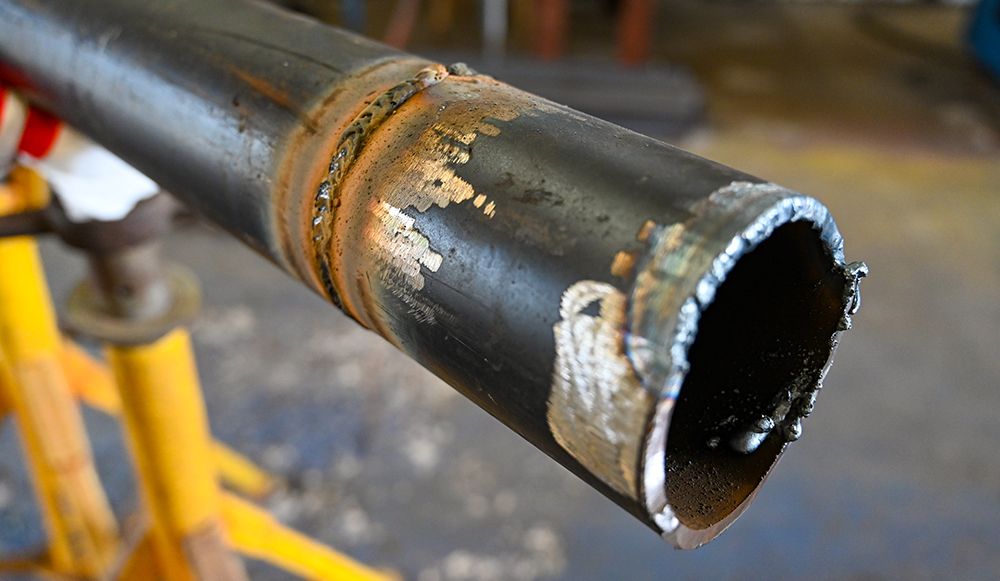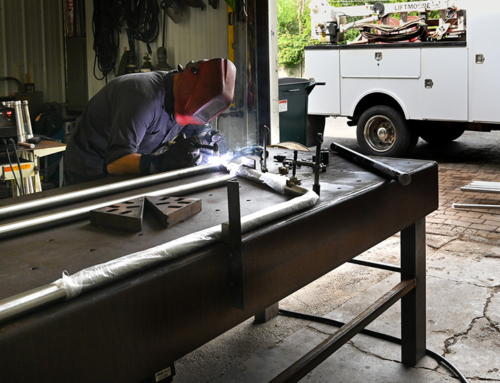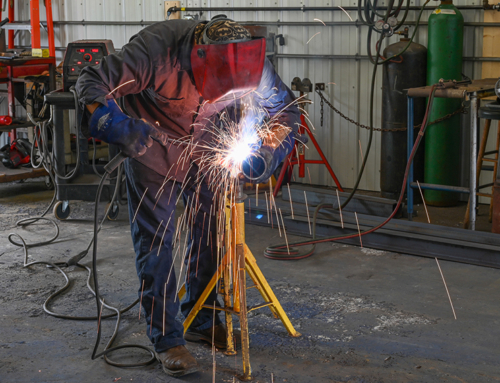Most people are probably not aware that welds can be different colors, let alone know whether that’s a good or a bad thing. Some of you may have seen a rainbow of welds either on TV shows or in real life, but aside from looking pretty cool, didn’t know how or why it happened. Of course, anyone familiar with welding and metal fabrication service knows all about it.
Why Metals Change Color
The short answer is oxidation. During the welding process, the metals are heated to high temperatures, which gives them the opportunity to interact with molecules in the air–mainly oxygen–and oxidation is the result.
Whether the color change happens, what colors will result, and to what degree the weld will be colored will depend on several factors. First, the type and makeup of the metal being worked will set the stage. Then, the composition of the molecules in the air, along with the temperature and the duration of exposure to heat, will do the rest.
Shielding gas or flux are both used by welders to help protect the heated metal from interacting with the atmosphere. Shielding gas uses inert gasses to essentially replace the atmospheric air surrounding the hot welds until they can cool enough to prevent oxidation. Flux will both dissolve any oxides present on the metal’s surface while also acting as a barrier to oxygen by coating the surface. Neither is foolproof, and both require a great deal of skill to maximize their effectiveness.
Are Colors a Sign of a Poor Weld?
For the most part, metal fabricators and welders will view colorful welds as a sign of trouble. Oxidation can cause significant problems for metals and can compromise the integrity of the finished piece. For example, when stainless steel welds show colors, we’ll know that chromium has moved to the surface of the metal.
This means leaving behind an area with depleted chromium, which will then be susceptible to rusting. Colorful titanium welds demonstrate contamination from atmospheric gas and can mean that the weld is actually brittle and seriously compromised. For titanium and steel fabrication, no color is usually an indicator of high quality welded joints.
On the other hand, not all specks of color are cause for alarm. Depending on what the final product will be used for, there are acceptable tolerances for welds based on different industries and building codes. The resulting colors are an indicator of how much oxidation has occurred.
For example, pale yellow and gold-colored welds are often acceptable as they indicate minimal oxidation and a relatively low risk of corrosion. Blue and purple, on the other hand, indicate higher levels of oxidation and a very high risk of corrosion. Plus, for some products, surface oxidation can be removed by cleaning or grinding to restore corrosion resistance, provided that deep oxidation hasn’t occurred.
What About Artistic Fabrication?
When it comes to fabricated products that are not meant to support structures or otherwise provide safety features for people, there is all the room in the world for colorful welds. Some automotive welders use colorful welds to enhance the appearance of cars and motorcycles. They must, however, take care not to use this on structural areas or create welds that will be too susceptible to corrosion and will destroy the aesthetics of the finished work.
An experienced metal fabrication company creating art pieces for customers will become familiar with the different temperatures and conditions that will lead to colorful displays and take advantage of them to create spectacular finished pieces. For colorful tig welding, by manipulating the angle of the torch, the amount of gas coverage, the levels of heat input, and the speed at which the welder is working, the welder can intentionally create a variety of colorful outcomes.
Expert Metal Fabrication & Welding
The skilled and experienced welders and metal fabricators at Grounded Industrial are standing by, ready to exceed your expectations with every project. We can tackle everything from industrial welding to commercial installations, mobile welding services, and more. Plus, we’re always happy to explain to our customers what to expect to achieve the best outcomes. Contact us today to get started with your free, no-obligation estimate.






